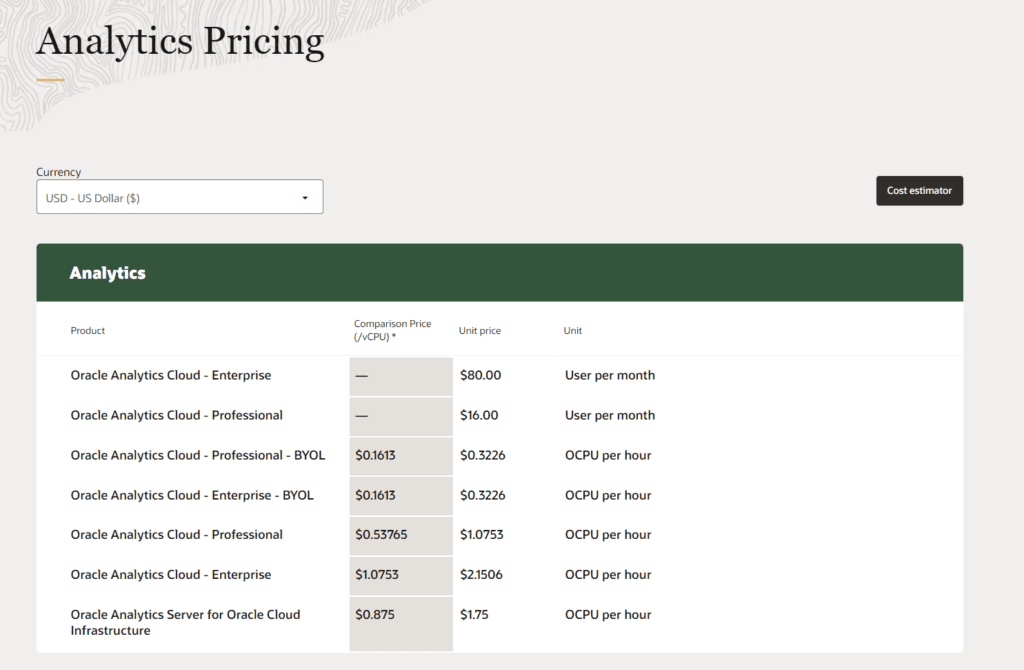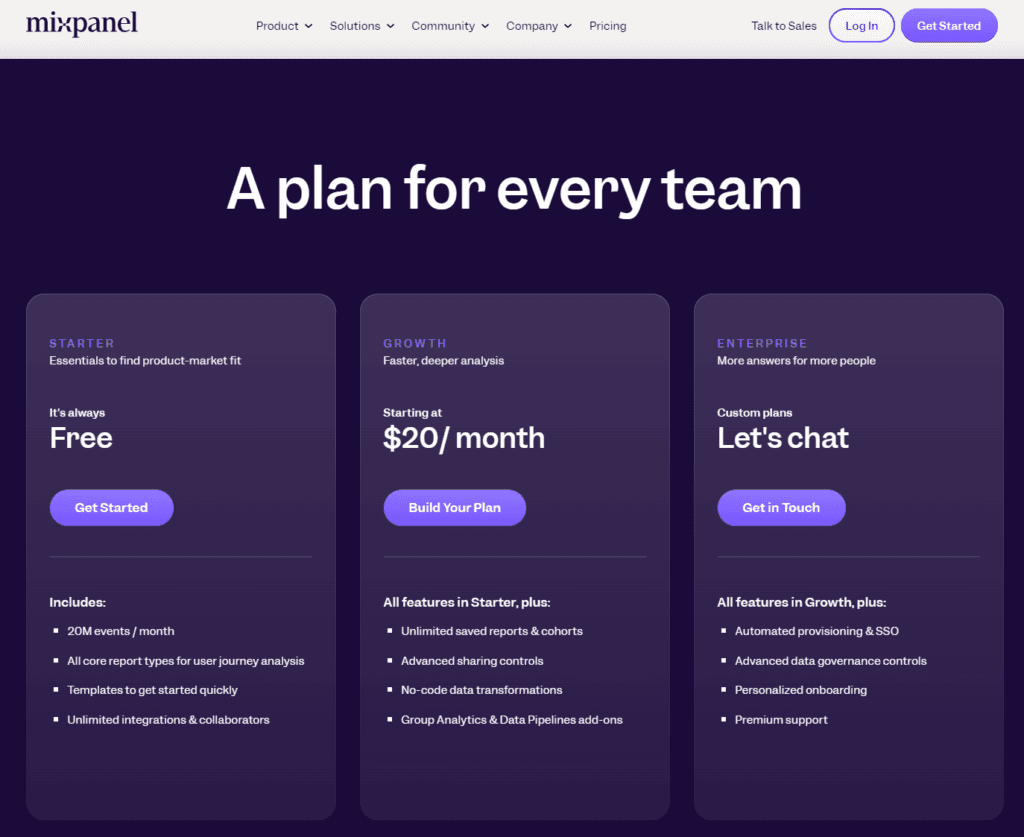In the digital age, where every click, every view, and every interaction is a breadcrumb trail leading to the treasure trove of consumer insights, choosing the right analytics tool is akin to selecting the perfect compass for your journey. Enter two formidable contenders in the realm of data analytics: Oracle Analytics Cloud (OAC) and Mixpanel. Each brings its unique strengths to the table, promising to guide you through the dense forest of data to the insights that lie beyond. But which one is the right guide for your journey? Whether you’re navigating the vast oceans of enterprise data or tracking the swift streams of user interactions, this guide is your beacon. Let’s embark on this quest to unveil which tool, OAC or Mixpanel, will be the best analytics ally for your business.
| Oracle Analytics Cloud | Mixpanel |
|---|---|
 |  |
| G2 Score -4.0 out of 5 | G2 Score -4.6 out of 5 |
| TrustRadius Score -8.1 out of 10 | TrustRadius Score -8.5 out of 10 |
Area of Comparison: User Interface and Accessibility
In the quest for data-driven wisdom, the path you choose is as crucial as the insights you seek. The user interface (UI) and accessibility of an analytics tool can either be a bridge or a barrier to the treasure of insights. Let’s delve into how Oracle Analytics Cloud and Mixpanel fare in making data analytics an accessible adventure rather than a cryptic quest.
Oracle Analytics Cloud: Navigating the Enterprise Seas
Oracle Analytics Cloud is like an ancient, detailed map of the world’s oceans, offering depth, breadth, and a wealth of information to those who know how to read it. With a comprehensive suite of tools designed for deep dives into data, OAC is tailored for the seasoned navigator – data scientists, analysts, and IT professionals who are not daunted by complex interfaces or extensive feature sets.
The UI of OAC, with its array of dashboards, reports, and analytics tools, offers a powerful command center for those seeking to uncover insights across multiple business functions. However, the richness of this command center requires a certain level of expertise to navigate effectively. New explorers may find themselves adrift without a knowledgeable guide, making OAC a formidable but less accessible choice for those unfamiliar with complex data analytics tools.
Mixpanel: Streamlining the Path to Insights
Mixpanel, in contrast, is like a modern GPS navigation system, designed with the user in mind, offering a straightforward and intuitive path to understanding user behavior and interactions. Aimed at product managers, marketers, and teams looking to make quick, informed decisions based on user data, Mixpanel’s interface is clean, user-friendly, and focused on delivering actionable insights without unnecessary complexity.
With Mixpanel, the journey to data insights is less about navigating through a dense forest of features and more about following a clear, well-marked trail. The platform excels in tracking user interactions, funnel analysis, and event tracking, making it a powerful tool for those looking to understand and improve the user experience on their digital platforms.
Pricing: Oracle Analytics Cloud vs Mixpanel
Continuing our journey into the realm of Pricing, we touch down on a topic that often serves as the deciding factor for many businesses when selecting an analytics tool. Pricing isn’t just about the sticker price; it’s about understanding the value delivered for the investment made. Let’s navigate through the pricing strategies of Oracle Analytics Cloud (OAC) and Mixpanel to unearth which platform might offer the golden ratio of cost to value for your specific needs.
Oracle Analytics Cloud: Tailored for Titans

Oracle Analytics Cloud is akin to a custom-built starship, designed to cater to the vast and varied needs of large enterprises and organizations with complex data landscapes. Its pricing model is reflective of this positioning, offering a tiered structure that scales based on usage, features, and the level of support required.
Pricing for OAC is not one-size-fits-all; it’s customized to fit the unique requirements of each organization. This means engaging with Oracle’s sales team to discuss needs and negotiate a package that aligns with your data analytics ambitions. While this bespoke approach ensures you only pay for what you need, it also introduces a level of complexity and unpredictability into the budgeting process.
For organizations capable of leveraging OAC’s extensive capabilities to their fullest, the investment can yield substantial returns in the form of deep insights, enhanced decision-making, and competitive advantage. However, for smaller entities or those with more straightforward analytics needs, the cost may be prohibitive.
Mixpanel: Navigating with Clarity

In contrast, Mixpanel offers a clear and straightforward pricing journey, much like charting a course using well-known stars. Aimed at startups, SMEs, and digital-centric businesses, Mixpanel’s pricing structure is transparent, with tiers based on the volume of data tracked and the features required.
Mixpanel provides several pricing tiers, from a free plan designed for basic analytics needs to more advanced plans that offer greater data capacities and sophisticated features like group analytics and data modeling. This tiered approach allows businesses to start small and scale as their needs evolve, without the need for extensive negotiations or customized pricing packages.
The transparency and predictability of Mixpanel’s pricing make it an attractive option for businesses looking to manage their budget effectively while still gaining valuable insights into user behavior and product performance.
Data Integration and Management: Oracle Analytics Cloud vs Mixpanel
Continuing our exploration requires adjusting our focus towards another crucial aspect that distinguishes great analytics tools from good ones: Data Integration and Management. This facet of analytics tools is akin to the capability of a ship to not only sail across diverse waters but also to harness the winds and currents from various directions, integrating these forces to propel forward efficiently. Let’s compare Oracle Analytics Cloud (OAC) and Mixpanel on their abilities to integrate with diverse data sources and manage this data effectively.
Oracle Analytics Cloud: The Versatile Fleet Admiral
Oracle Analytics Cloud stands as a fleet admiral in the realm of data integration and management, commanding respect with its powerful capabilities. OAC is designed to handle a wide array of data types from myriad sources, including other Oracle products, third-party applications, cloud-based services, and on-premises databases. This makes OAC a formidable tool for organizations that operate within complex data ecosystems and require a centralized platform to gather, process, and analyze data from across their operations.
The strength of OAC lies in its versatility and depth, offering advanced data preparation tools, ETL processes, and data governance features. These capabilities ensure that data is not only integrated from various sources but is also clean, consistent, and ready for in-depth analysis. However, wielding this power requires a crew skilled in data engineering and analytics, potentially making OAC less accessible to novices in the data world.
Mixpanel: The Agile Explorer
Mixpanel, on the other hand, operates more like an agile explorer, swift and nimble in its approach to data integration and management. Primarily focused on user interaction data, Mixpanel excels at integrating with websites, mobile applications, and other digital platforms to track user behavior, events, and interactions in real time.
While Mixpanel might not match OAC in terms of the breadth of data integration, it offers profound depth within its niche, providing businesses with detailed insights into how users engage with their digital products. Mixpanel’s integration process is streamlined and user-friendly, allowing product managers, marketers, and developers to easily track the metrics that matter most to them without deep technical expertise.
The focus on user data makes Mixpanel a powerful tool for organizations looking to understand and optimize the user experience across their digital platforms. However, businesses requiring integration with a broader range of data sources might find Mixpanel’s capabilities more limited compared to OAC.

Related: Check out our free SEO suite

Advanced Analytics and Machine Learning Capabilities: Oracle Analytics Cloud vs Mixpanel
Given the constraints and the focus on providing concise, valuable content within this format, further expanding on the comparison between Oracle Analytics Cloud (OAC) and Mixpanel in one message is challenging. However, I can outline a potential next section for the comparison, focusing on Advanced Analytics and Machine Learning Capabilities. This section would naturally follow the exploration of data integration and management, diving into how each platform utilizes the integrated data to provide deeper insights and predictions.
Oracle Analytics Cloud: The Deep Space Explorer
Oracle Analytics Cloud is like a deep space explorer equipped with advanced sensors and analytical instruments designed to not only observe but also understand the mysteries of the cosmos. OAC’s advanced analytics and machine learning capabilities are built for organizations that require deep, predictive insights into their data, beyond simple descriptive analytics.
With OAC, users can harness the power of machine learning to predict trends, identify patterns, and even automate decision-making processes based on data-driven insights. Its capabilities extend to offering AI-driven forecasts, anomaly detection, and sophisticated scenario analysis. This suite of advanced tools is designed for data scientists and analysts who are prepared to delve into the complex mathematics behind predictive analytics, offering them a powerful platform to drive strategic decisions.
Mixpanel: The Agile Navigator of User Journeys
Mixpanel, acting as an agile navigator, specializes in charting the intricate pathways of user journeys across digital landscapes. While it may not offer the same breadth of advanced analytics and machine learning tools as OAC, Mixpanel provides valuable insights into user behavior, engagement, and retention through data-driven analysis.
Mixpanel utilizes machine learning in focused areas, such as predicting user actions and identifying trends in user behavior that can inform product development, marketing strategies, and user experience improvements. These capabilities are accessible to non-technical users, making it possible for marketers, product managers, and developers to leverage predictive insights without needing a background in data science.
Conclusion
As we conclude our comparative journey, remember that the most effective analytics tool is the one that aligns with your strategic goals, integrates seamlessly with your existing systems, and empowers your team to unlock actionable insights. Whether you choose the expansive power of Oracle Analytics Cloud or the agile precision of Mixpanel, the key is leveraging these tools to illuminate the path forward, driving growth and innovation in your organization.
READ NEXT:
- Hotjar vs Statcounter: The Best Analytics Tool for You
- Oracle Analytics Cloud vs MonsterInsights: The Best Analytics Tool for You
- Hotjar vs Mouseflow: The Best Analytics Tool for You
- MicroStrategy vs Zoho Analytics: The Best Analytics Tool for You
- Oracle Analytics Cloud vs Baremetrics: The Best Analytics Tool for You
- 11 Marketing Analytics Tools to Elevate Your Data-Driven Strategies
- 29+ Digital Analytics Software to Skyrocket Your Digital ROI





















Comments are closed.